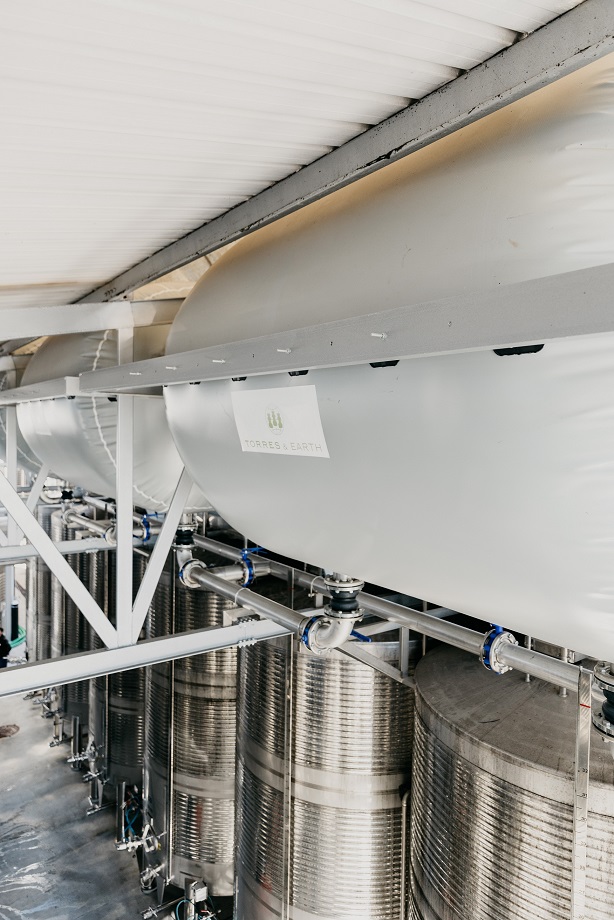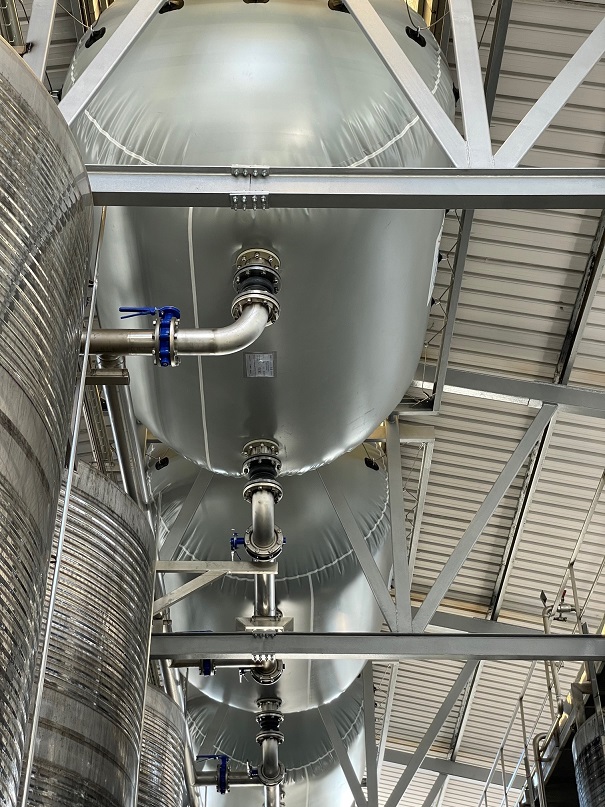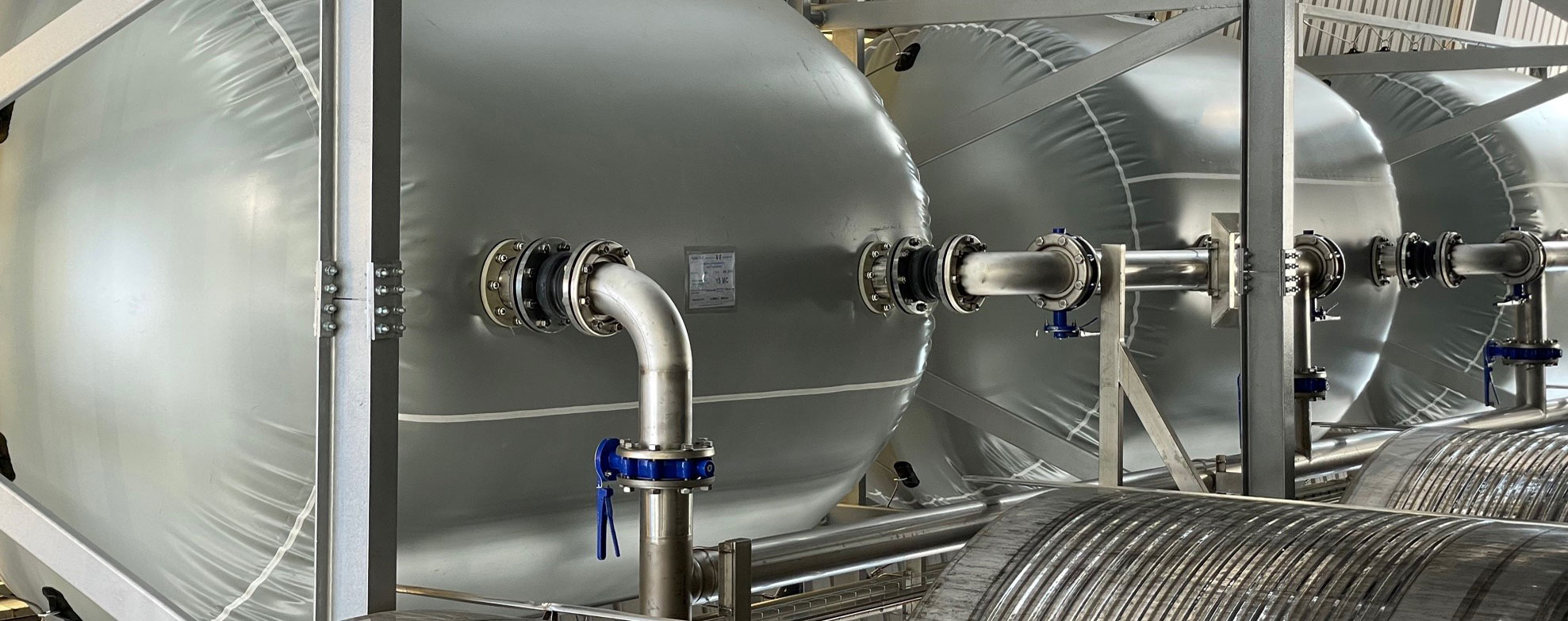With this solution, Familia Torres is able to reuse an estimated 20 tonnes of emission-neutral carbon dioxide per year, which corresponds to one third of the gas required by the winery. According to company president Miguel A Torres, the technology will be made available to other wineries, significantly reducing the use of CO2 of fossil origin.


This system consists of adapting the fermentation tanks so the CO2 released during the fermentation process can be conveyed to these three large balloons positioned above seven tanks. As the wine ferments and releases CO2, the gas is captured inside the balloons, which inflate. Then, using an air compressor, the gas is compressed to a pressure that allows it to be transferred to another tank where it is stored, to be reused later – sometimes mixed with nitrogen – as an inert gas for filling the headspace (‘blanketing’) in tanks.
Typically, the CO2 used at a winery comes from a gas supplier who usually gets it from oil refineries, and therefore it has an associated carbon footprint. Fermentation CO2, on the other hand, is not of fossil origin, but rather is the same CO2 the vine absorbed through photosynthesis, so it is considered emission neutral.
According to Miguel, “every tonne that we manage to recover and reuse means one tonne less in our carbon footprint and, additionally, a saving on the winery’s CO2 supply bill. This system is effective and profitable, and we're going to share it with other wineries so that, together, we’ll be able to significantly reduce the use of fossil-origin CO2”.
The system is the result of several years of research and testing in the context of CCR (Carbon Capture & Reuse) technologies. Familia Torres says the results from this year’s harvest were “very satisfactory” and it will expand the installation for next year’s vintage.
Since the business, now in the hands of the fifth generation, launched its Torres & Earth programme in 2008, it has reduced CO2 emissions per bottle by 34% across its entire scope (both direct and indirect emissions). It aims to achieve a reduction of at least 60% by 2030.













.png)






